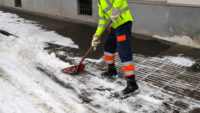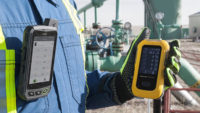The days are growing shorter and temperatures are beginning to drop. Colder months are ahead for many and these fall and winter conditions can put outdoor workers at risk of several injuries, including cold stress, frostbite, and hypothermia. Employers must protect their crews from the harsh reality of these seasons by stocking up on insulating personal protective equipment designed for outdoor work. Staying safe in the cold is often more complicated than simply bundling up. Here’s what companies should do instead:
Identify the risks
Safety managers should assess the potential impact of the cold based on the temperature, region, wind chill, weather patterns, and moisture levels. They can sample various types of PPE to see how these items stand up to these conditions. Then, the company can create a winter weather plan outlining which materials or items are needed, when they should be worn, and how long workers should work outdoors.
Managers should remember that not everyone will have the same reaction to the cold. Studies show individuals with preexisting health conditions that affect circulation, including cardiovascular and respiratory diseases, and those taking various medications tend to be more susceptible to cold stress. The plan may need to be modified based on personal sensitivity.
Choose the right protection
Virtually every part of a person’s body should be covered when working outside in the cold.
It starts with building up a series of layers around the body. The layer closest to the skin should be made of lightweight moisture-wicking materials that will dry quickly when wet. This helps as workers can still work up a sweat even in the coldest conditions. The inner layer can be made of thick wool, and the outermost layer should be loose and made of nylon or polyester to break the wind.
If the crew needs to wear additional protective equipment, such as a hard hat, they can wear warming inserts inside their helmets to prevent warm air from escaping their forehead.
The person’s gloves should contain insulation while protecting them from cuts, tears, and holes. The gloves should have a strong grip to help workers grip tools and railings, which can be more slippery in wet weather.
Thick rubber shoes or boots keep workers’ feet warm and dry. The bottom should have reinforced treads to increase traction with the ice and snow.
As for the eyes, workers should wear goggles or sunglasses to protect their eyes from glare — also known as snow blindness — with anti-fog capabilities to help them see.
All these materials should be waterproof if excess moisture is in the air. Workers should do their best to keep items dry when covering up.
Employee/employer training
Before the work can begin, every team member must familiarize themselves with the dangers of working in the cold and the importance of wearing insulating layers. Individuals should watch for symptoms of cold stress and hypothermia in themselves and others, such as sweating or the sudden urge to take off warming layers. Workers should also remember to stay hydrated and maintain a proper diet when working in the cold. The company should also have an emergency response plan for injuries, such as having first aid equipment on hand.
The cold may not be enough to stop the crew from working outside, but managers must protect workers from these hazards. Everyone should have access to the proper PPE and the information they need to stay safe on the job.



